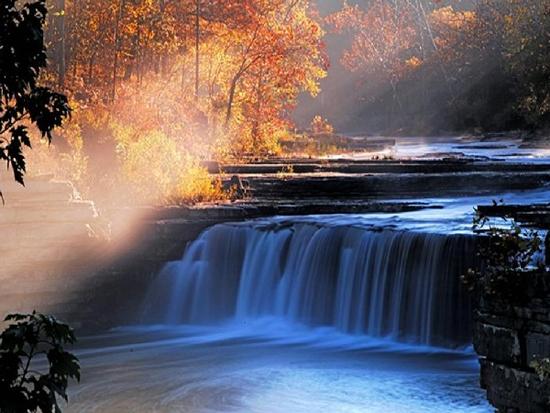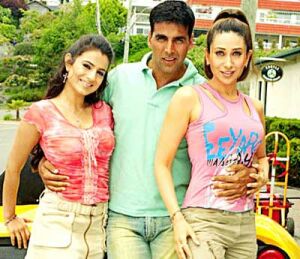Water is the source of life – treasure it! R5.
Water is the source of all life on earth. It touches every area of our lives. Without it, we could not thrive — we could not even survive.

Sustainability – “We strive to meet the needs of the present generation without compromising the ability of future generations to meet their own needs”.
We should discourage wastefulness and misuse, and promote efficiency and conservation.
“Conservation is really the cheapest source of supply,”
For the benefit of mankind, maintain the quality of life and preserve the peace and tranquility of world population. Water resources must be preserved – to sustain humanity. We must eliminate wasteful utilization of water, conserve our water sources and implement rigid conservation methods. We should utilize solar and or other source of renewable energy to operate desalinization projects from the oceans. Utilize renewable energy sources to purify and transport the water to its final destination. As world population increases the scarcity of water will become a cause for conflict, unless we take steps now to develop other sources of water for drinking, rainwater harvesting – storm-water and gray-water utilization. Designing of landscaping that uses minimal amount of water.
“With power shortages and a water scarcity a constant threat across the West, it’s time to look at water and energy in a new way,”
To preserve the future generations sustainability, we should look into urban farming – vertical farming. The term “urban farming” may conjure up a community garden where locals grow a few heads of lettuce. But some academics envision something quite different for the increasingly hungry world of the 21st century: a vertical farm that will do for agriculture what the skyscraper did for office space. Greenhouse giant: By stacking floors full of produce, a vertical farm could rake in $18 million a year.
YJ Draiman, Energy, Telecom and water conservation consultant
November 1, 2010
PS.
Hydro dynamics: forget oil. Sharing freshwater equitably poses political conundrums as explosive and far-reaching as global climate change.
Quoted from other sources
Anyone who has ever stood on a beach and looked out into the vast expanse of an ocean knows that there is a lot of water on this planet. In fact, 70 percent of the Earth’s surface is covered by water. It may seem like water is all around us, but safe, clean, reliable drinking water is not a cease¬less resource. The problems facing drinking water range from failing infrastructure, to climate change, to insufficient supplies.
Personal Conservation
Preserving our water resources is not a job for water industry professionals alone. We all have a vested interest in ensuring that water remains safe, af¬fordable and available. Therefore, each individual American has a responsibility to monitor and control their water use, There are many simple ways for people to reduce excess water use, lower water bills and protect the environment, espe¬cially in die spring and summer months, Beyond the standard constraints of watering the lawn only when neces¬sary and washing car wisely by using soap and a bucket of water, some steps include: draining water lines to outside faucets, disconnecting hoses, shutting off outdoor water sources during cold weather and running a small trickle of water on whiter nights to prevent pipe from freezing.
Conclusion
Water supply management is an issue that affects us all. It may not be apparent to every citizen today, but with climate change and population shifts transforming the United States, it soon will be. Effective solutions need to be put into place today before we are faced with a water crisis. A focus on careful planning, treatments, innova¬tions and conservation measures will help to create stability for long-term water management. Commitment to keeping water at the top of the list for communities and citizens will better prepare us for whatever the future of water holds.
WATER!
The indispensable source of life-without water there would be no industry, no agriculture and, most importantly of all, no life. In dry parts of the world this essential commodity is even more precious. Almost all human actions involve water from taking a shower to reading a newspaper to driving a car or simply eating a sandwich – almost everything we do or touch is somehow related to this precious treasure. We ask that you stop and think how you use water and what you can do to conserve this essential natural resource.
*Water, beliefs and customs,
*Water as a vehicle of the economy,
*Water, source of art and life, irrigation and cultivation.
The people have decided to act to try and develop a real awareness program on the theme of water preservation and distribution in an attempt to help maintain the original purity of rivers and streams.
In many parts of the world water sources and wells are not equally distributed. Water as a source of life can also be at the source of conflict.
Whether we live in India, Iceland or the Atlas… we have always tried to trap and tame water. Dams, pumps, canals, water treatment centers; there are so many different ways to exploit this resource that we often forget how fragile this unique and essential treasure actually is.
Unfortunately, many of the things we do every day can harm our water. That’s why all people and government should be working with municipalities, farmers, business leaders and developers just like you to take action to protect our water and clean it up.
Small changes can make a big difference. This guide outlines practical things we can all do to preserve and protect our water. We all need to be part of the solution.
Concentrated Solar Power, which requires no solar panels at all. It works by concentrating sunlight onto a small pipe using cheap parabolic reflectors. The pipe contains a liquid that’s heated to very high temperatures by the sun and drives a steam boiler that rotates a turbine to generate electricity (much like nuclear power plants, but without the nuclear waste). It’s cheap, low-tech, and far more affordable than solar power. Plus, it can be built in practically any desert, so it doesn’t take up valuable land. As another bonus, when CSP operations are built near the ocean, they can desalinate ocean water as a side effect, providing fresh water for irrigation to grow food. This is the only renewable energy technology I know of that can produce cheap energy, fresh water and crop irrigation all at the same time. Plus, it has no emissions, no toxic chemicals, no nuclear waste and very little environmental impact..
“You can’t escape the responsibility of tomorrow by evading it today” – Abraham Lincoln said it.
“That man is richest whose pleasures are the cheapest” – Henry David Thoreau.
“To waste, to destroy, our natural resources, to skin and exhaust the land instead of using it so as to increase its usefulness, will result in undermining in the days of our children the very prosperity which we ought by right to hand down to them amplified and developed” – Theodore Roosevelt.
“When the ‘study of the household’ (ecology) and the ‘management of the household’ (economics) can be merged, and when ethics can be extended to include ‘environmental’ as well as human values, then we can be optimistic about the future of mankind. Accordingly, bringing together these three E’s is the ultimate holism and the great challenge for our future” – Eugene Odum.
Water, it’s been said, is the “oil of the 21st century” — a commodity whose availability and quality may be subject to both known and unknown influences. For companies, that poses significant risks, and many companies are making water a strategic issue, creating water management plans that include efficiency and conservation as well as contingency plans should water become less available or more costly. Many firms are examining their products, policies, and processes through the lens of a world in which the availability of water becomes a constraint to doing business.




